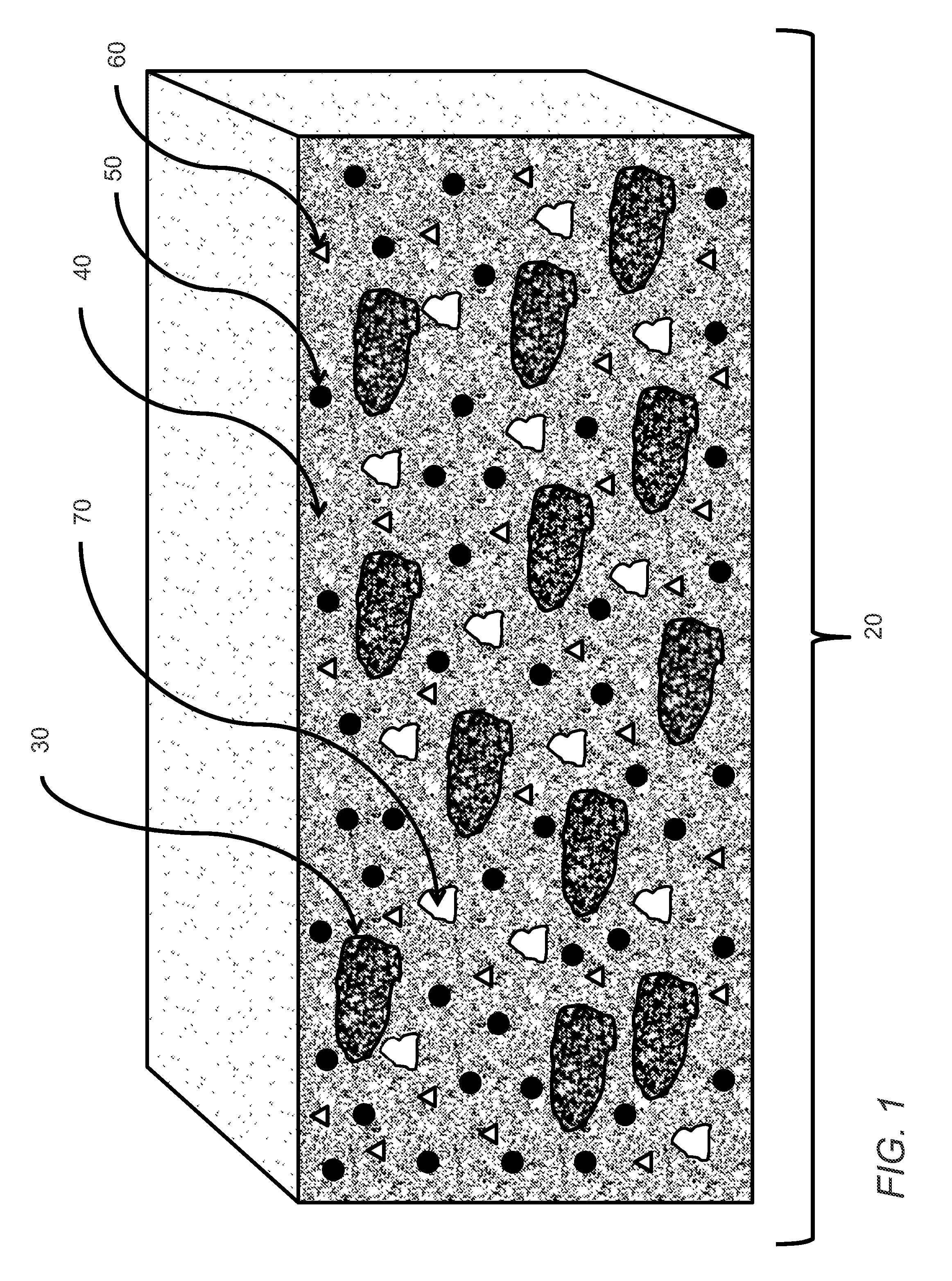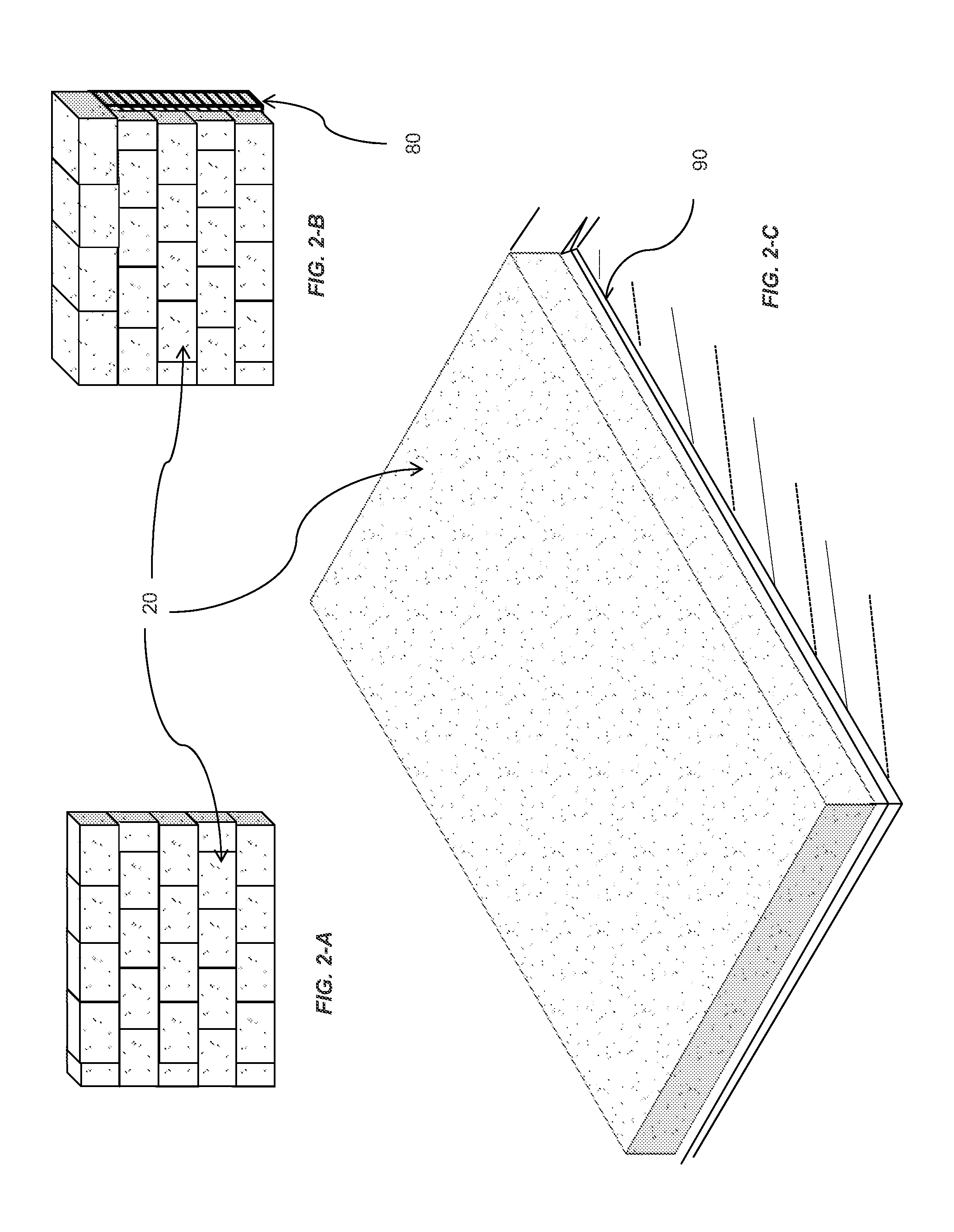Method and Matrix for Enhancing Growth Media
a growth media and matrix technology, applied in the field of growth media enhancement methods and matrixes, can solve the problems of soil depth and, subsequently, limited plant types, soil loss of water holding capacity and fertility, and organic matter decomposition quickly, so as to promote plant growth, reduce erosion, and increase water holding capacity
- Summary
- Abstract
- Description
- Claims
- Application Information
AI Technical Summary
Benefits of technology
Problems solved by technology
Method used
Image
Examples
Embodiment Construction
[0049]The invention relates to particulate inclusions embedded in a medium for enhancing growth. In some embodiments, these particulate inclusions are embedded in a hydrophilic polyurethane foam to provide an enhanced growth matrix. In many embodiments, the enhanced growth matrix exhibits reduced flammability. In other embodiments, the enhanced growth matrix exhibits reduced thermal conductivity. In still other embodiments, the enhanced growth matrix exhibits enhanced support for vegetative growth.
[0050]In some embodiments, the particulate inclusions have a high ignition temperature. The ignition temperature is the temperature at which the material will support combustion when it is exposed to a flame and air. This is also called the fire point. The ignition temperature is typically higher than the flash point, which is the lowest temperature at which a material will form an ignitable mixture in air, and lower than the autoignition temperature, which is the temperature at which the ...
PUM
| Property | Measurement | Unit |
|---|---|---|
| ignition temperature | aaaaa | aaaaa |
| weight percent | aaaaa | aaaaa |
| weight percent | aaaaa | aaaaa |
Abstract
Description
Claims
Application Information
 Login to View More
Login to View More - R&D
- Intellectual Property
- Life Sciences
- Materials
- Tech Scout
- Unparalleled Data Quality
- Higher Quality Content
- 60% Fewer Hallucinations
Browse by: Latest US Patents, China's latest patents, Technical Efficacy Thesaurus, Application Domain, Technology Topic, Popular Technical Reports.
© 2025 PatSnap. All rights reserved.Legal|Privacy policy|Modern Slavery Act Transparency Statement|Sitemap|About US| Contact US: help@patsnap.com



